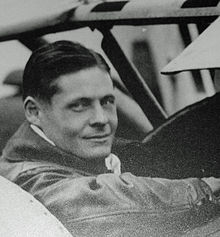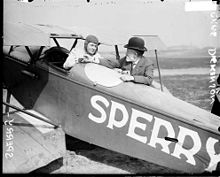Legacy
A website using the name Mile High Club regards the "Club's" "founder" as pilot and design engineer Lawrence Sperry, along with "socialite Mrs. Waldo Peirce" (Dorothy Rice Sims)
citing their flight in an autopilot-equipped Curtiss Flying Boat near New York in November 1916.
Why, Mrs Peirce and I didn't have what you might dignify by calling a real accident. It was only a trivial mishap. We decided to land on the water and came down perfectly from a height of 600 feet and would have made a perfect landing had not the hull of our machine struck one of the stakes that dot the water, which staved a hole in it.
In 1979, Sperry was inducted into the International Air & Space Hall of Fame at the San Diego Air & Space Museum.
Sperry was inducted into the Naval Aviation Hall of Honor at the National Naval Aviation Museum in Pensacola, Florida, in 1992.

